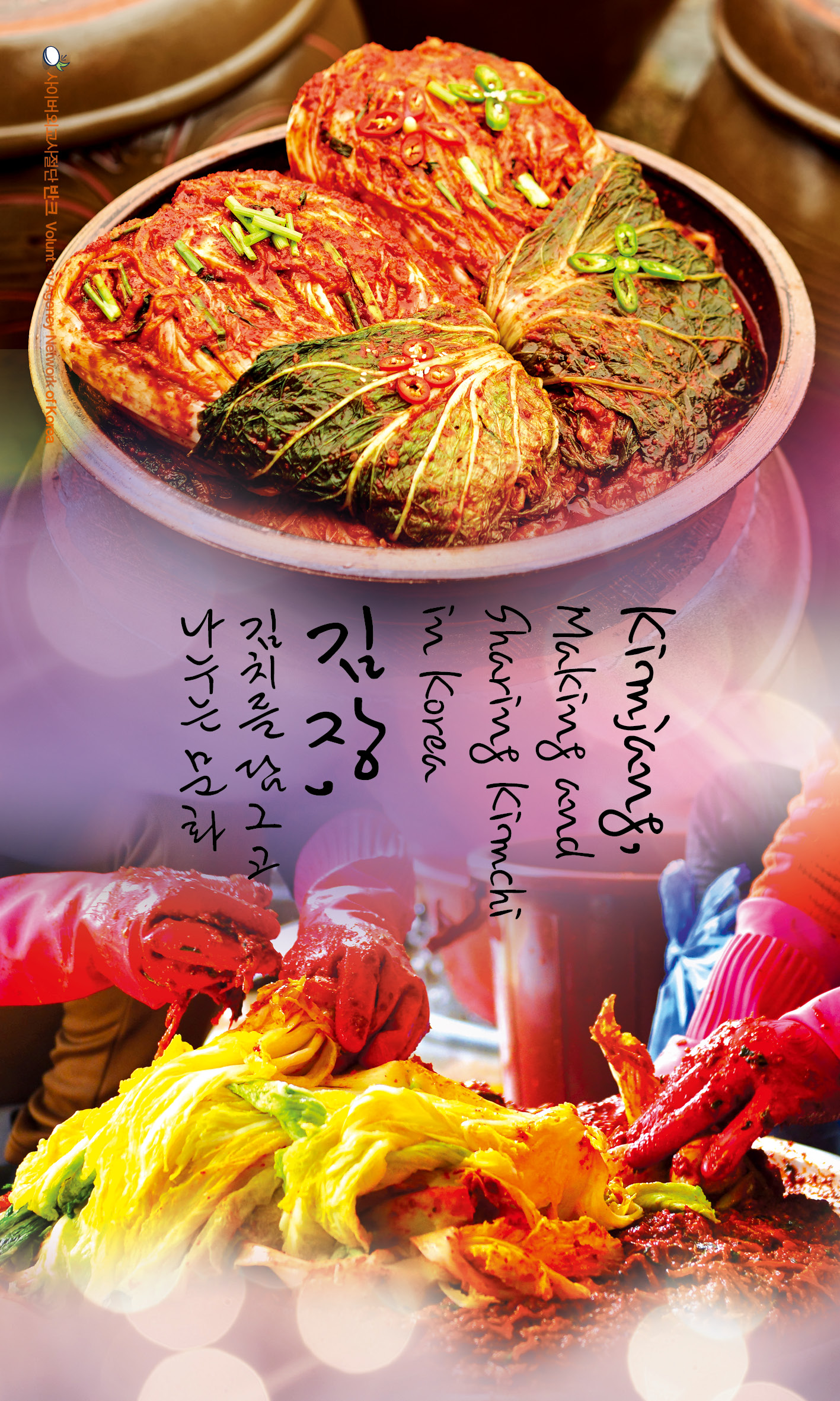 For Korean, Kimjang means to make a great amount of Kimchi in order to prepare for a long and cold winter. Kimchi is a fermented food made with various vegetables, such as radish, cabbage and cucumber, which is salted and seasoned. It is essential for Koreans’ meals.
For Korean, Kimjang means to make a great amount of Kimchi in order to prepare for a long and cold winter. Kimchi is a fermented food made with various vegetables, such as radish, cabbage and cucumber, which is salted and seasoned. It is essential for Koreans’ meals.
It takes a year to prepare for Kimjang. In spring, they procure seafood, such as shrimp and anchovies, for salting and fermenting. In summer, they acquire sea salt, which will be stored for a couple of years to remove its bitter taste. In late summer, red chilli needs to be dried and ground into powder. Finally, in late autumn, they set the date for Kimjang, considering the weather forecasts. In recent days, the process of preparation for Kimjang has been much simplified, but the culture of doing Kimjang remains unchanged.
Kimjang skills are usually succeeded by women in the family. The member of a family who is the most skilled and experienced transfers the knowledge and techniques of Kimjang to other members of the family or relatives. Therefore, making Kimchi varies in ingredients and methods. Kimjang is sometimes taught as a part of school curriculum. Children get used to Kimchi through Kimjang classes in kindergarten and professional cooking schools train Kimjang skills in a professional level.
Kimjang reminds us to live in harmony with nature. Through Kimjang, Koreans learn the knowledge on nature and the wisdom of living in accordance with its rhythm. In addition, Kimjang makes Koreans think of and practice sharing. In every season of Kimjang, various big and small events are organized all around Korea. Kimchi, made by thousands of people in these events, is donated to those who need it.
The food culture of Koreans contains not only the wisdom of living in harmony with nature, but the sharing spirit that makes them look around the neighbors in need. Kimjang, the custom of making and sharing Kimchi, is a Korean heritage that leads the community to communicate and harmonize.